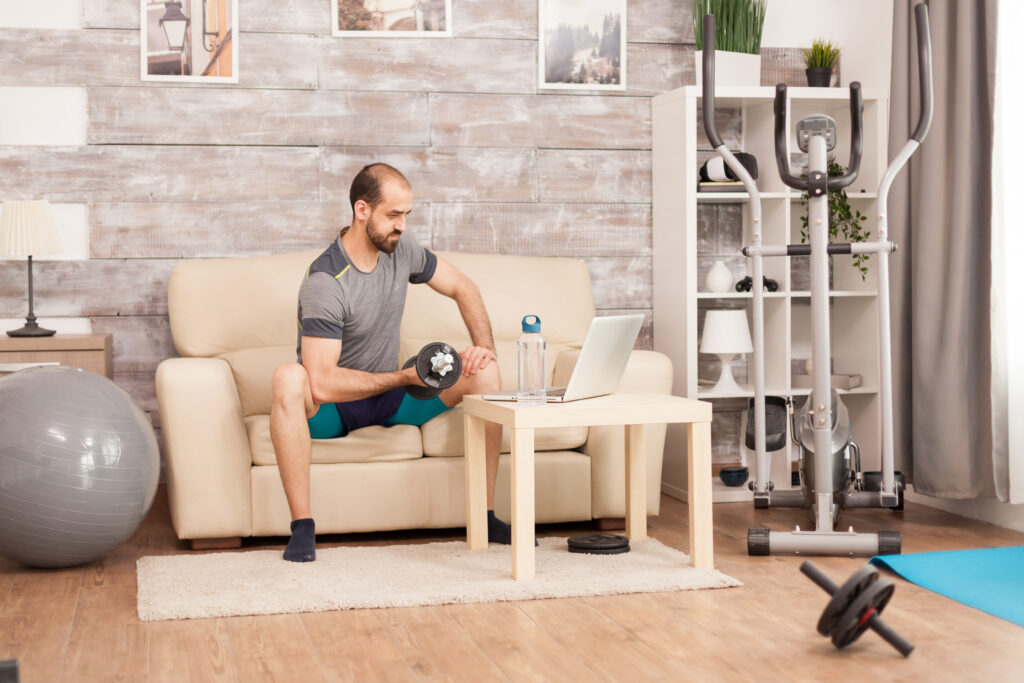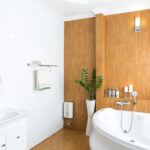The Home Gym is no longer an afterthought tucked away in a dusty corner; it has become a central and sought-after feature in American homes. Planning your Home Gym in 2026 means focusing on personalized wellness, seamless technology, and a design that truly motivates you. This dedicated space offers unparalleled convenience and is a wise investment, providing a measurable return on investment (ROI) when it comes time to sell. To build a space you’ll actually use, you need a strategy that covers more than just equipment selection. Let’s explore the top 10 trends to guide your perfect Fitness space build.
Foundational & Design Trends for Your Home Gym
1. Smart Home Gym Equipment Selection and Layout
The core of any great Garage gym is smart equipment selection. The trend is shifting toward integrated, multi-functional machines and smart mirrors that offer guided training and performance tracking, saving space while maximizing workout variety.
2. Prioritizing Specialized Home Gym Flooring
Proper flooring is non-negotiable for safety and protecting your subfloor. Commercial-grade rubber tiles or rolls are the standard, offering superior shock absorption and noise reduction—essential considerations for a premium fitness space.
3. Acoustic Planning for a High-Performance Exercise room
Noise is a major drawback of basement or garage setups. In 2026, advanced Exercise room planning includes acoustic paneling on walls and ceilings to contain the sound of weights and loud music, ensuring peace for the rest of the household.
4. Maximizing Natural Light in Your Personal gym
A dark space is demotivating. If possible, incorporate large windows or glass doors. For basement setups, strategic lighting design and ample mirror placement are key to reflecting light and energizing your dedicated space.
5. Seamlessly Integrated Storage for Your Fitness space
Clutter kills motivation. Dedicated, built-in storage solutions for resistance bands, yoga mats, and small weights maintain the clean, focused aesthetic of a modern Home Gym. Look for vertical storage racks and hidden cabinetry.
Technical and Financial Aspects of Your Home Gym
6. Ensuring Adequate Ventilation in Your Residential fitness facility
Proper ventilation is vital for air quality and comfort, especially during intense workouts. Investing in a high-quality HVAC sub-system or a dedicated air filtration unit is a wise use of the financing options you secure.
7. Budgeting Wisely for Equipment Selection in Your Home
The overall cost depends heavily on your equipment selection. A basic setup can cost a few thousand dollars, while a fully custom Home Gym with integrated technology can quickly exceed $50,000. Plan your budget before committing to a project timeline.
8. Understanding the Return on Investment (ROI) of a Home Gym
While the psychological ROI is immense, a well-designed Home Gym is a desirable amenity that helps your home stand out on the market, directly contributing to increased property value.
9. Scheduling Your Project Timeline for Your Home Gym
The project timeline for transforming an existing room into a functional Home Gym is relatively short—typically 4–8 weeks for electrical, flooring, and finish work, provided no major structural changes are needed.
10. Vetting Professionals for Your Home Gym Construction
Don’t skip the contractor selection process. Choose a remodeling contractor experienced with gym-specific needs, such as structural reinforcement for weight loads and specialized electrical wiring for high-demand equipment.
Conclusion
Building a custom Home Gym is an investment in both your property and your long-term health. By embracing these 2026 trends—from proper acoustics and ventilation to smart equipment selection—you create a highly desirable, functional, and motivating space. Prioritize quality installation and thoughtful design to maximize your long-term return on investment (ROI).
A dedicated Home Gym eliminates wasted commute time, offers unmatched privacy, and ensures your fitness goals are always within reach. Investing in this convenience elevates your quality of life significantly, making it one of the most rewarding improvements you can make to your home today.
FAQs
What is the most critical feature to budget for in a Home Gym besides the equipment itself?
A: Prioritize specialized, shock-absorbent flooring (like rubber mats or rolls) and professional-grade ventilation. These are essential for safety, protecting your home’s structure, and maintaining indoor air quality during workouts.
How does a Home Gym installation impact my property value or ROI?
A dedicated, well-designed Home Gym is considered a premium, high-value amenity by many buyers. It offers a strong return on investment (ROI) by increasing the desirability and perceived value of your property.
How can I deal with noise when setting up a Home Gym in a basement or garage?
A: Focus on acoustics and vibration dampening. Use thick rubber flooring and consider installing acoustic panels on the walls and ceiling to contain sound from weights and music.
What are modern trends for Home Gym equipment selection in 2026?
A: The focus is on seamless technology. Trends favor integrated smart machines, multi-functional equipment, and interactive mirrors for guided training, which maximizes space and engagement.



